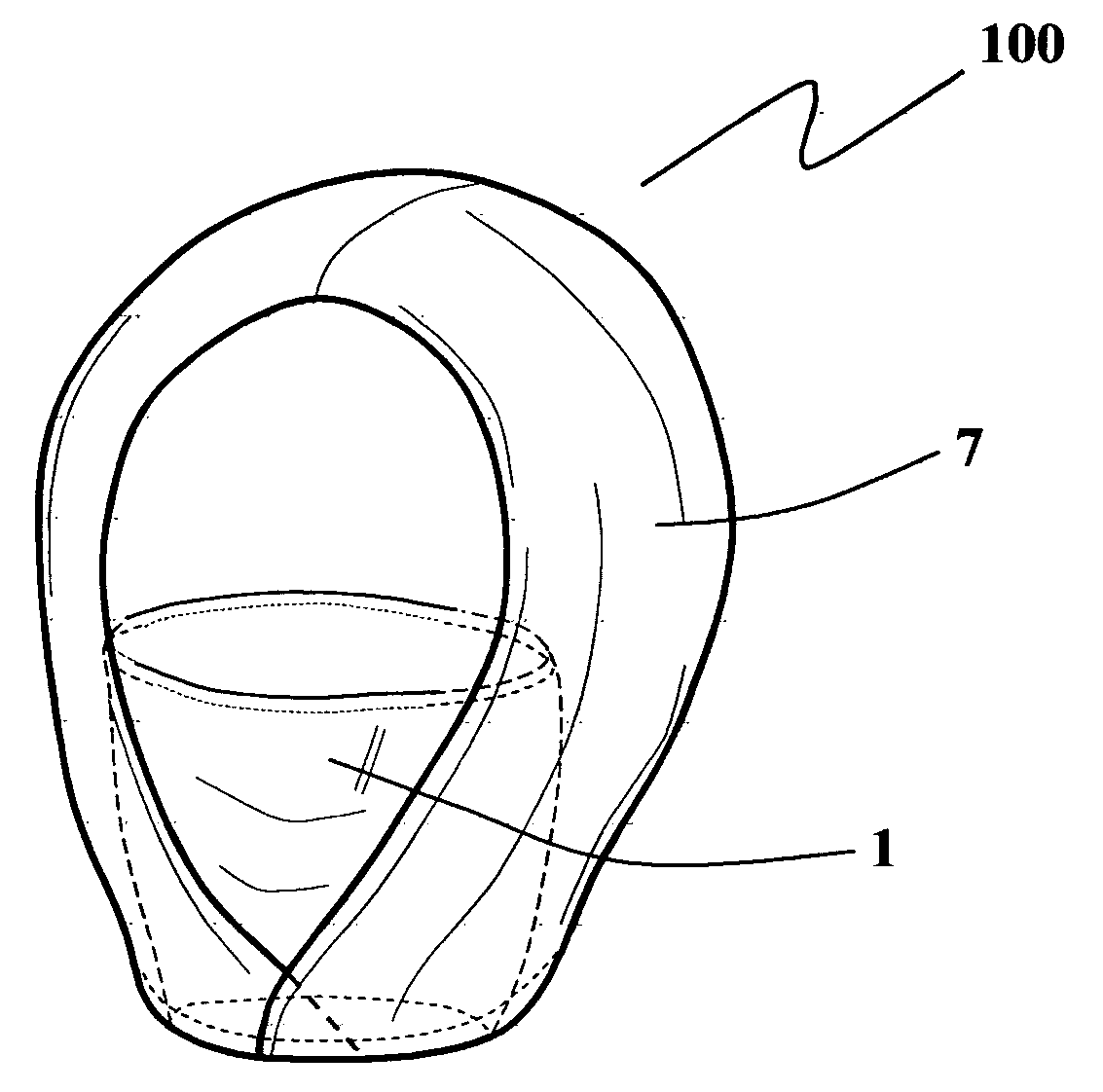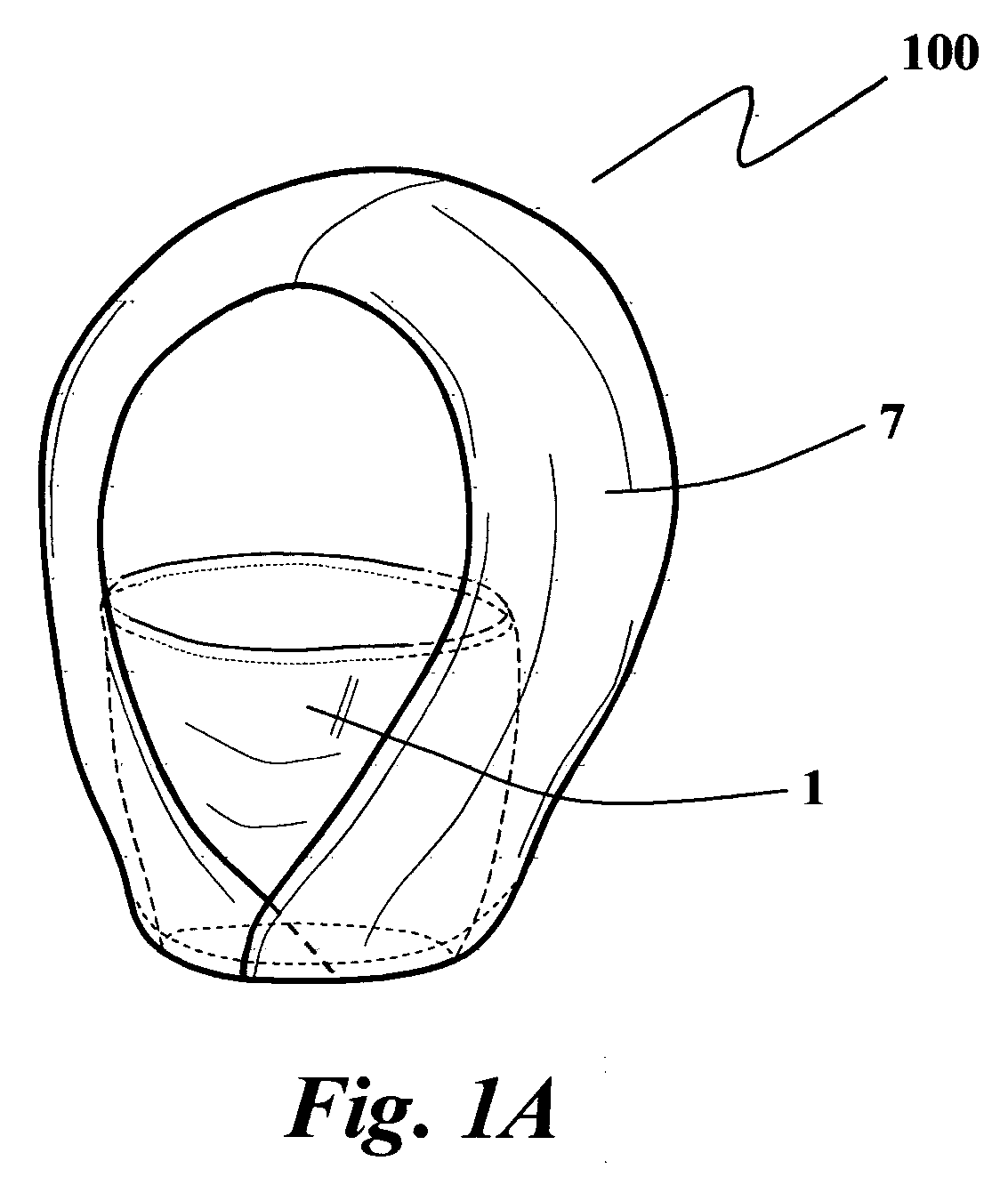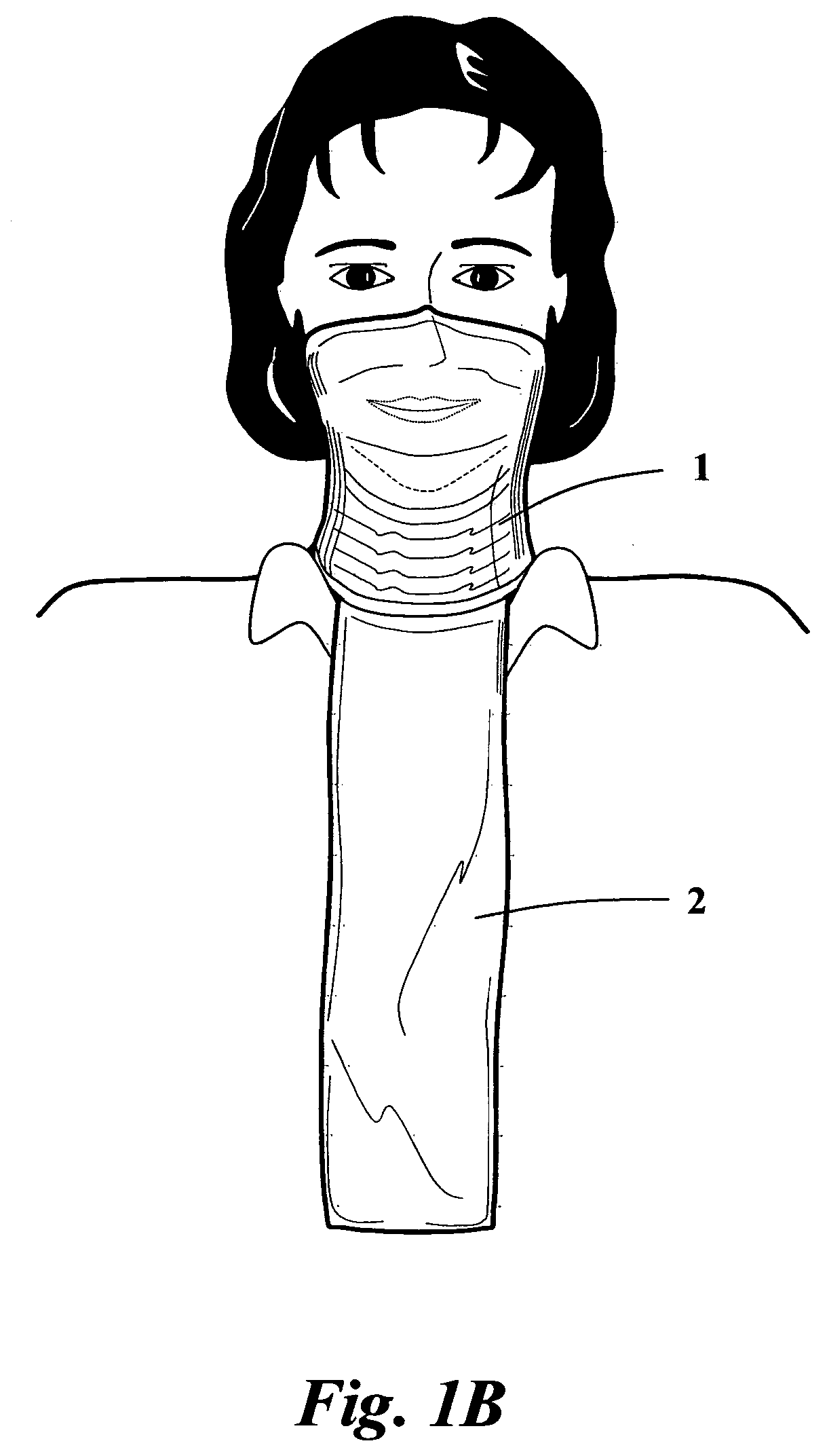Hooded scarf
a hooded scarf and hooded technology, applied in the field of hooded scarfs, can solve the problems of scarf loosening, knots that get in the way of wearers, and knots that are often unattractive,
- Summary
- Abstract
- Description
- Claims
- Application Information
AI Technical Summary
Benefits of technology
Problems solved by technology
Method used
Image
Examples
Embodiment Construction
[0028] The detailed description represented herein is not intended to represent the only way or the only embodiment in which the claimed invention may be practiced. The description herein is provided merely as an example or examples or illustrations of the claimed invention and should not be construed as the only way or as preferred or advantageous over other embodiments or means of practicing the invention. The detailed description includes specific details to provide a thorough understanding of the claimed invention and it is apparent to those skilled in the art that the claimed invention may be practiced without these specific details. In some instances, well known structures and devices are shown in block diagrams or drawn with broken lines in order to avoid obscuring the main concepts of the invention.
[0029]FIG. 1A shows the perspective view of the hooded scarf 100 while FIG. 1B shows the scarf without a hood. The hooded scarf comprises a hood, a tubular neckpiece 1 and option...
PUM
 Login to View More
Login to View More Abstract
Description
Claims
Application Information
 Login to View More
Login to View More - R&D
- Intellectual Property
- Life Sciences
- Materials
- Tech Scout
- Unparalleled Data Quality
- Higher Quality Content
- 60% Fewer Hallucinations
Browse by: Latest US Patents, China's latest patents, Technical Efficacy Thesaurus, Application Domain, Technology Topic, Popular Technical Reports.
© 2025 PatSnap. All rights reserved.Legal|Privacy policy|Modern Slavery Act Transparency Statement|Sitemap|About US| Contact US: help@patsnap.com



